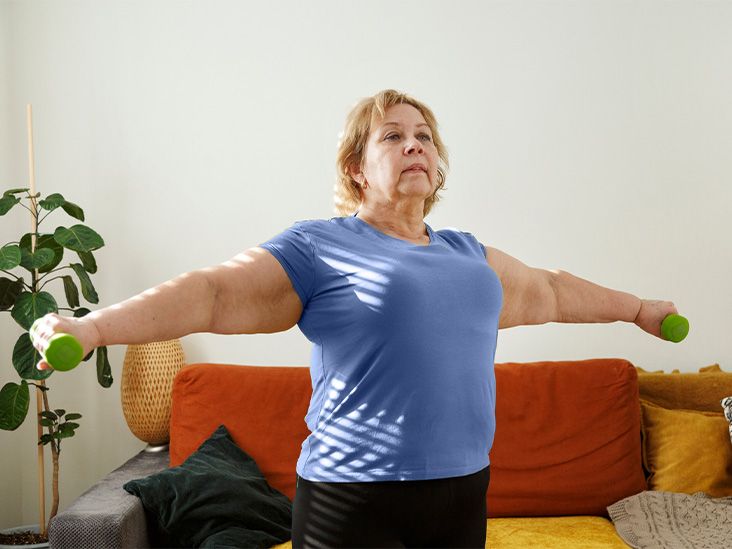Original Medicare and Part C should provide a comprehensive pulmonary rehabilitation program for a person who has chronic issues with breathing.
Original Medicare includes Part A, which is hospital insurance, and Part B, which is medical insurance. As healthcare professionals generally offer a rehabilitation program (PR) in an outpatient setting, this coverage falls under Part B.
Medicare Advantage (Part C) plans, an alternative to Original Medicare, also cover the program. Another option is Medicare supplement insurance (Medigap), which may help with costs.
This article discusses Medicare coverage and out-of-pocket costs for pulmonary rehabilitation, as well as eligibility requirements for coverage. It then describes the program and explains how a person can find assistance in their area.
In Original Medicare, Part B covers PR. Medicare Advantage (Part C), an alternative to Original Medicare that must provide the same benefits, should offer similar coverage.
However, since Medicare Part D only covers prescription drugs, this part would not provide coverage for PR. Similarly, Medigap, which is Medicare supplement insurance, does not directly cover PR.
Instead, Medigap is intended to cover part or all of the coinsurance, deductible, and copay costs a person will have to pay after Original Medicare pays its share of the cost.
A person can check the 10 different plans to find the one that is most suitable for their needs. They should also be aware, that they cannot use their Medigap plan to cover costs leftover from Medicare Advantage.
Original Medicare and Part C cover up two 1-hour sessions per day for a total of 36 sessions during up to 36 weeks of PR for a person who has moderate to very severe chronic obstructive pulmonary disease (COPD).
Medicare’s requirements for coverage of PR programs are as follows:
- A person must have moderate to very severe breathing conditions, such as COPD or COVID-19.
- A doctor must decide that the rehabilitation is medically necessary and provide a referral to the program.
- The program must comply with Medicare’s documentation requirements.
How much a person pays without insurance for PR depends on where they get care. Generally, with Original Medicare, if a person gets the service in a doctor’s office, they pay 20% of the Medicare-approved cost. When someone receives the service in an outpatient hospital, they must pay the hospital a copay for each session.
In either of these cases, a person must also pay the Part B annual deductible, which is $257 in 2025. This is in addition to the monthly premium of at least $185, based on annual income.
Sometimes a healthcare professional may recommend more sessions than Medicare allows. If this happens, a person may have to pay all or part of the cost. This online tool can help an individual check costs.
When it comes to Part C plans, the out-of-pocket costs differ. These plans are managed by private insurers and have different premiums, deductibles, and coinsurance depending on the plan. According to the Centers for Medicaid & Medicare (CMS), the average monthly premium for Part C plans is around $17.00 in 2025.
Medicare Advantage plans also typically require a person to see in-network healthcare professionals.
HelloMedicare is an affiliate of RVO Health. By clicking on this link, we may receive a commission. Learn more.
If someone believes they might benefit from a PR program, they may wish to discuss it with their doctor.
To get more information about a program, a person can contact the American Lung Association Helpline at 800-LUNGUSA (800-586-4872). They can also speak with their healthcare professional for more information on PR programs.
Before the PR program starts, the healthcare team may ask a person to do one or more of
- 6-minute walk test to gauge the capacity for exercise
- pulmonary function test to evaluate breathing
- exercise stress test to measure heart rate, blood pressure, and oxygen level during physical activity
When the program starts, it will include exercise training to build stamina and flexibility. It may also include some of the following:
- breathing techniques, such as yoga, to help ease the sense of being out of breath
- instruction in finding easier, energy-saving ways to do everyday tasks
- help to quit smoking
- psychological counseling for mental health issues
- nutritional counseling for optimal health
At the end of the rehabilitation, the healthcare team may retest a person to see how much their breathing has improved.
Medicare resources
For more resources to help guide you through the complex world of medical insurance, visit our Medicare hub.
People with Original Medicare may get coverage for pulmonary rehabilitation through Part B. They will need to pay coinsurance, the annual deductible, and possibly a copay.
Individuals with Medicare Advantage (Part C) also have coverage for this type of treatment. However, the out-of-pocket costs differ from those of Original Medicare.
Medicare typically covers up to two 1-hour sessions per day, up to 36 sessions in up to 36 weeks.
“”


